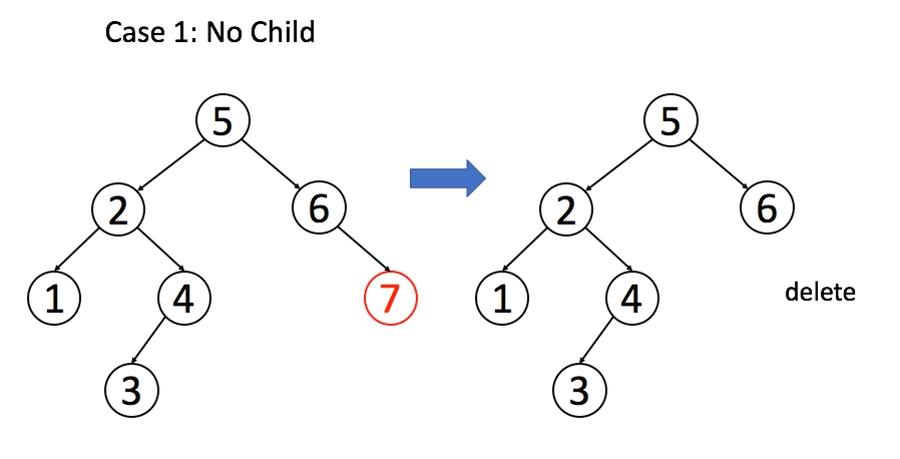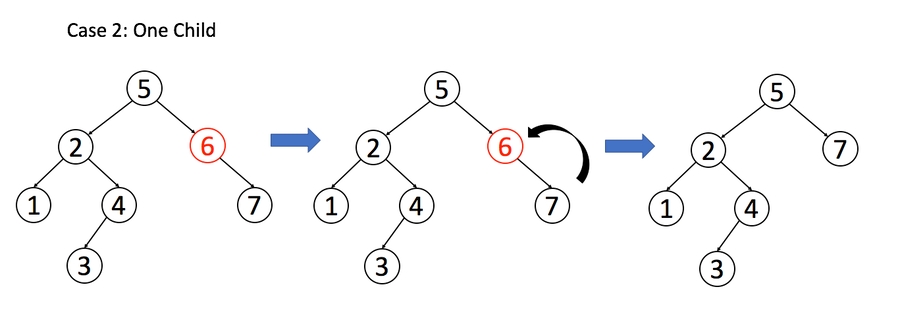Delete Node in a BST
Given a root node reference of a BST and a key, delete the node with the given key in the BST. Return the root node reference (possibly updated) of the BST.
Basically, the deletion can be divided into two stages:
Search for a node to remove.
If the node is found, delete the node.
Note:Time complexity should be O(height of tree).
Example:
root = [5,3,6,2,4,null,7]
key = 3
5
/ \
3 6
/ \ \
2 4 7
Given key to delete is 3. So we find the node with value 3 and delete it.
One valid answer is [5,4,6,2,null,null,7], shown in the following BST.
5
/ \
4 6
/ \
2 7
Another valid answer is [5,2,6,null,4,null,7].
5
/ \
2 6
\ \
4 7Solution
According to the number of its children, we should consider three different cases (video):
If the target node has no child, we can simply remove the node.
If the target node has one child, we can use its child to replace itself.
If the target node has two children, replace the node with its in-order successor or predecessor node and delete that node.
Here are examples of different cases to help you understand this strategy.


Iterative solution.
Recursive solution.
Last updated
Was this helpful?